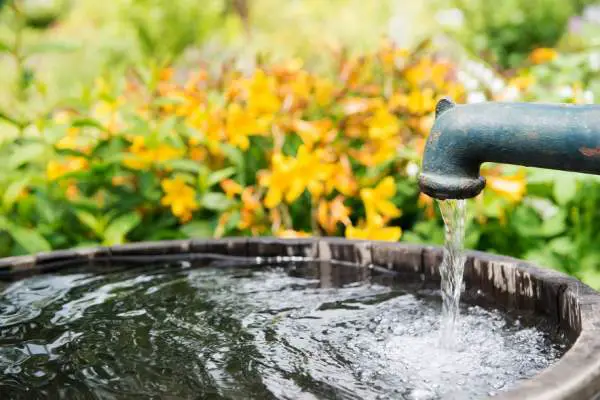One of the most daunting things for a new hydroponic gardener is in maintaining their hydroponic reservoir.
With many factors to consider, it can be overwhelming, yet it isn’t as challenging as it first appears. Gardeners may comprehend the influence temperature has, and the number of nutrients they require. However, they often struggle with the concept of oxygenation levels in their solution.
You may know it is beneficial to use an air pump; however, you may find yourself not fully understanding, how to determine the best air pump size for hydroponics. While an air pump may not appear to do too much, plants need to receive oxygen from the water to survive. An air pump, in many cases, may not be too large, yet it can harm your crops if it is too small.
Why You Need an Air Pump in Hydroponics?
In a hydroponic system, the gardener must deliver everything their plants require.
Many gardeners know about water, light, and nutrients, yet equally important is oxygen. While there may be some oxygen taken up by the upper portions of the plants, the majority is taken up by the root system.
If you grow in soil, there are pockets of air between the grains of soil, so your plant won’t be sat in just water.
Once you look at Hydroponic systems and you don’t use an air pump, water loses the oxygen and stagnates. Once this happens, your plants quickly drown as a result.
With the introduction of an air pump, the bubbles add dissolved oxygen into your water. if you could look close enough, you would see these tiny pockets in the same manner as those found in soil
You can also find another couple of benefits of using air pumps. The first is to keep your solution mixed, and the second is that it can help to reduce the temperature of your solution, particularly if your pump is sucking in cool air.
When you look at some systems, you can get by without using an air pump, yet even these can benefit significantly as plants love all the oxygen they can get. More oxygen means they can take up more nutrients, and they can grow to their full potential.
Also read: What Size Your Hydroponics Water Pump Should Be?
The Noise of Hydroponic Air Pumps
One drawback of an air pump is the noise they produce. While it is the function of your air stones to create bubbles, the air pump’s function is to suck in air from outside the reservoir.
In contrast, a water pump has the noise suppressed by the water. While all air pumps will make a noise, you will find some quieter than others. When checking your pump, you will see the manufacturer places a level on the packaging.
Any pump you purchase should be 45 decibels or lower, and then it will blend with the surrounding noises.
Other Air Pump Considerations
The function of an air pump is simple, yet there are a few other things you need to consider to get the best from it.
Tubing from your pump into your tank should be black as a way of stopping light from getting into your reservoir. Most are often supplied with clear, and you may need to change these.
The second thing to consider is the size of your system and the reason for calculating the size of the air pump you require. You can find air pumps that offer one outlet, or others comprise up to eight outlets.
With multiple pipe connections, you have the chance to place air stones in different areas of your reservoir, or you can run multiple systems from one pump.
Many larger-scale growers may opt for two pumps rather than one to act as a failsafe. If one fails and it can cope with your system, then your plants won’t suffocate.
Lastly, it would be best if you were sure your pump matches your air stones. An air stone that is too large may have air coming just from one location, and thus other areas may block prematurely. In addition to this, any air stones you use ought to produce smaller bubbles.
With this, you find the oxygen dissolves easier as the bubbles travel slower, and more of the water surface is disturbed. Larger bubbles merely rise to the surface faster and will break the water surface less.
Air stones come in multiple sizes, yet once you have a pump that can drive air through all of the stones, you can find a four-inch size is ideal.
You may not hear much about this, and the issue stems from aquariums more than hydroponics, though it could be an issue.
If you have a deep tank rather than a shallower horizontal, there can be back pressure and water can seep back through the tube into your pump. You will find this can be another reason to have a larger pump than you may think you require.
Calculating the Size of Air Pump for Hydroponics
You can look at purchasing an air pump in many ways, although there is one rule of thumb that a few gardeners use, it is often seen as leading to overkill for your system.
Buying an air pump that has a wattage equal to the number of gallons in your reservoir can lead you to purchase a pump you don’t need. You will see this happens to be a none technical way of selecting your ideal pump.
While you can follow this method, a lot depends on the size of your tank to the extent of the pump you require. One good thing to know is that it is almost impossible to have too much air in your water. The only time this would be an issue is if the water was being thrown from the top of your reservoir.
It is a pump that is too small that causes issues because it can’t oxygenate your solution enough for all your plants.
A pump you need has to deliver at least 500-600 CC (cubic centimeters) per minute. If you see 500-600 ml per minute, the volume of air is the same, and it is a quick 1 to 1 conversion.
For home gardens, even the cheapest pumps can deliver this, although you need to think about your pump in operation.
It is possible to turn your pump off on occasions for limited periods though it isn’t advisable, and your pump ought to be on 24/7. Commercial grade air pumps often come with a single outlet that can connect to a larger hose, and from this, you can connect multiple branches of smaller hose connectors.
Even though these are more costly, they are not overly expensive and will be more durable than smaller air pump variants.
Conclusion
When it comes down to the purchasing decision, unless you have a larger than average garden, you can find most of the available pumps will deliver a steady stream of air to your system.
How long the cheaper models can do this is questionable, so it can be a better option to move upmarket and purchase one that you know will deliver the reliability you require.
Besides this, if you want to go with the failsafe method and opt for two air pumps, you can easily find two middle-of-the-road-size pumps that offer plenty of air throughput without reaching the top end of your budget.
Even if you think the pumps appear to be overpowered, you can quickly reduce the number of air stones, although your plants will appreciate the additional oxygen.





